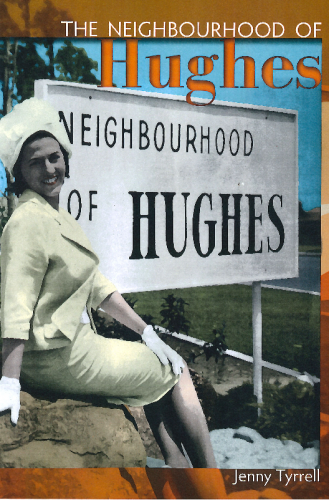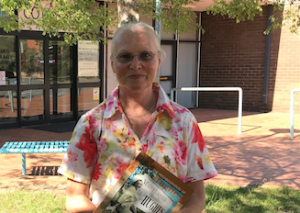HUGHES is something of a special suburb, says author Jenny Tyrrell, whose book “The Neighbourhood of Hughes” details its history from its official opening in 1964 while revealing the quirky stories and series of firsts that make the suburb unique.

Jenny has lived in Hughes for 25 years, though she says she didn’t know its history when she moved in, and she and her husband just liked the house and garden.
“I was an active parent at the school and was school board secretary for a number of years. When it came to the centenary, I volunteered to put something together about the suburb,” she says.
“I found out that Hughes was extra special in that it had a week of celebrations and events to open the suburb, known as the Hughes Exposition, and there were all sorts of other bits of information coming out, so I started contributing to the school newsletter and ran oral-history sessions at the school for the kids.
“We also had a wine and cheese night, as my neighbour told me they were very popular back in the early days!”
Hughes was officially opened on May 9, 1964, and more than 2000 people attended the initial event, Jenny says. The school opened in January, 1964, although Jenny says the first people moved in 1963, nearly a year before the suburb officially opened.
It was the first suburb to be established in the Yarralumla Valley, and Jenny says it was quite a big deal for the south-west Canberra area.
“It was very isolated then, with no street lights and felt a bit like the end of the world,” she says.
“The joke was that people were moving here to be near the cemetery. It’s still on the road to the cemetery!
“Arthur Rich was the first person to get keys to a house in Hughes, but he told me he wasn’t the first person to move in because he was busy painting, so his neighbour moved in first.”
Hughes was very carefully planned and laid out, right down to the plantings, Jenny says, with the idea being that housewives could walk in pleasant surrounds to post a letter, and go to the shops and the school without crossing the road.
“And there are mainly pedestrians today, you meet people out walking all the time and the kids can walk and ride safely to school without crossing roads,” she says.
“We had the first underpass in Canberra, it was a trial and they obviously found it quite successful.”
Jenny says she has received many comments and stories from Hughes’ dwellers about the early days.
“It’s been nice to hear about moving here and what they liked, choosing their block of land, the different kinds of options, the trouble getting builders, one couple had to apply for an extension because they couldn’t get a builder in the timeframe – it’s all been included in the book,” she says.
“The Hughes Primary School principal was a student at the school, and there are a lot of second and third-generation families, it’s always been a very connected suburb.
“It’s small with around 1200 houses, and a lot of people were born in Hughes and now live in the house their parents owned.

“One family was lampooned by their friends for moving out all this way, to ‘North Cooma’ as it was called, but coming from a farm they said they loved it – the kids could roam free up Red Hill, the neighbours all gathered together often and they’d have big bonfire nights and share their fireworks together.
“So there are lots of special things. Hughes for example had the first library in Woden and there was much excitement when the street lighting and the public phones were installed.”
Jenny says that Downes Place was named after Maj-Gen Downes and his daughter planted two Doris Downes roses in every garden in Downes Place.
“The roses were named after her mother and the street was named after her father, and there are some roses that are original, they’re still there now at one of the residents’, Molly’s house.”
“The Neighbourhood of Hughes” is dedicated to Jenny’s son Cameron, who suffers from Primary Immune Deficiencies, a rare genetic condition, which means he has frequent infections and autoimmune disorders.
“I wrote the book to tell the stories of Hughes, and also to raise awareness of Primary Immune Deficiencies, and I hope to donate the funds raised to further research,” she says.
“It was research at the ANU and Canberra Hospital which led to a breakthrough after years of illness and tests for Cameron which confirmed a diagnosis for him.”
“The Neighbourhood of Hughes”, $30, available from Hughes Capital Chemist. Funds raised by sales of the book will go to the Immune Deficiencies Foundation Australia (IDFA) and the Centre for Personalised Immunology at the John Curtin School of Medical Research at the ANU.
Who can be trusted?
In a world of spin and confusion, there’s never been a more important time to support independent journalism in Canberra.
If you trust our work online and want to enforce the power of independent voices, I invite you to make a small contribution.
Every dollar of support is invested back into our journalism to help keep citynews.com.au strong and free.
Thank you,
Ian Meikle, editor




Leave a Reply